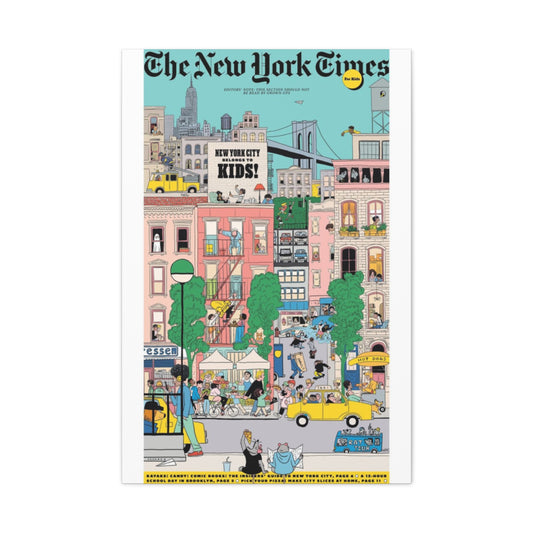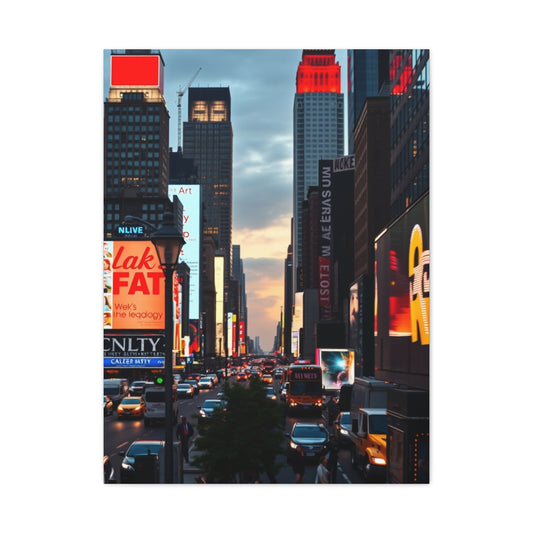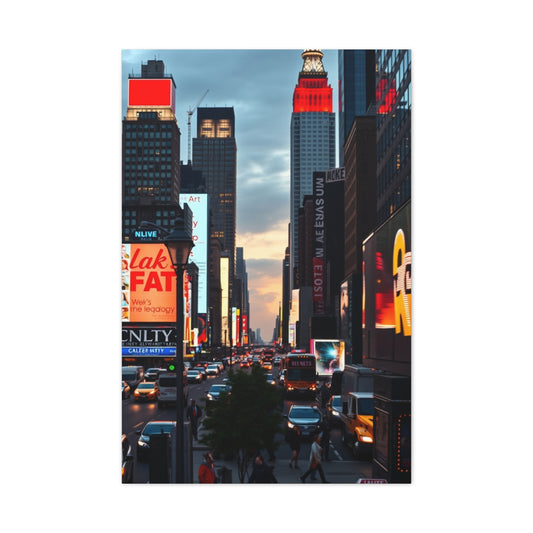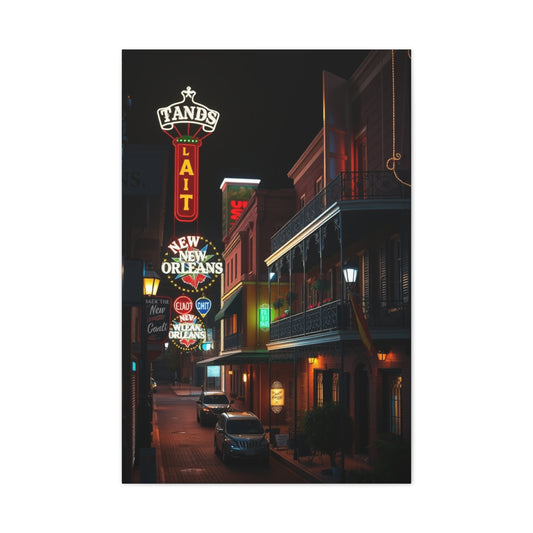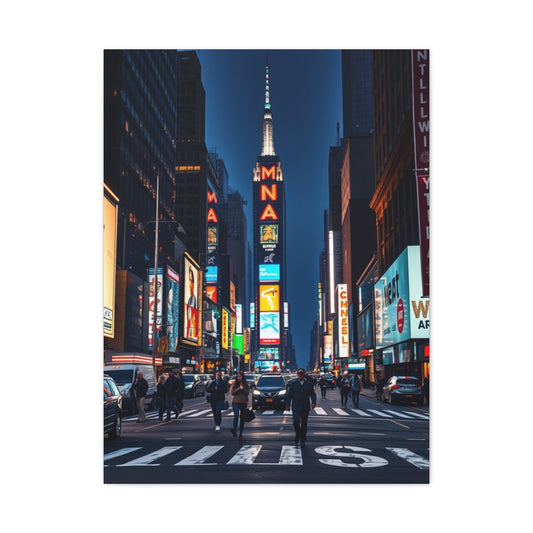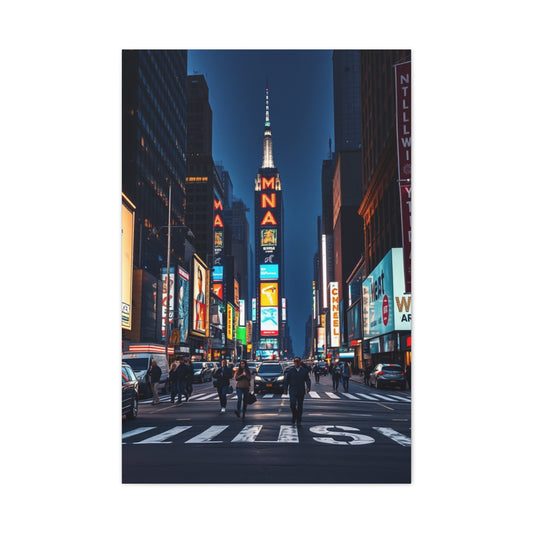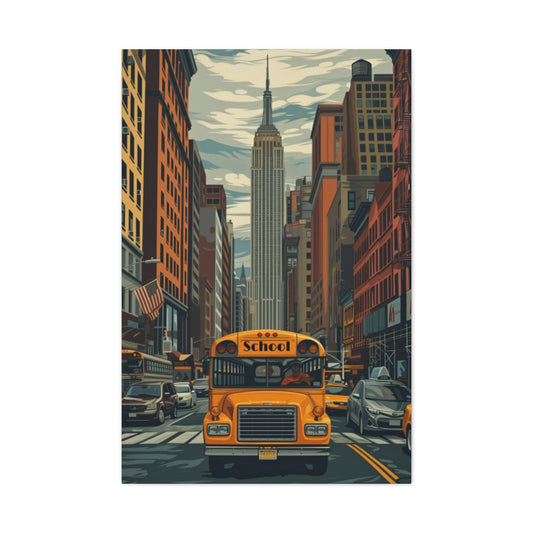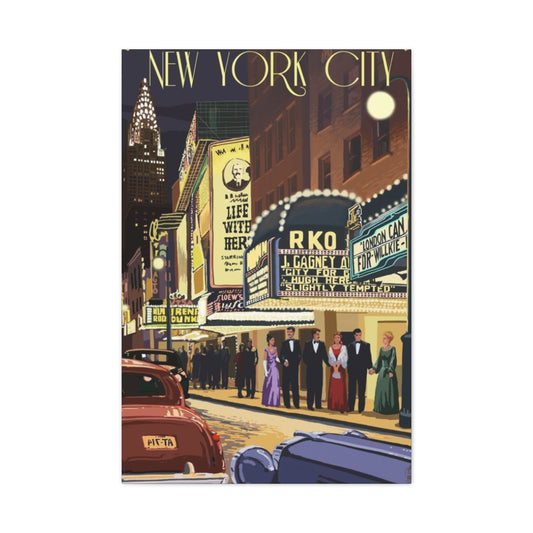As remote work becomes a fundamental part of modern professional life, creating a well-designed home office is no longer a luxury—it’s a necessity. This space isn’t just a place to complete tasks; it’s where focus meets creativity and where your environment profoundly influences your productivity and well-being. One of the most impactful ways to enhance this space is through thoughtfully chosen wall art. More than simple decor, the right artwork can elevate your home office into a sanctuary of inspiration, motivation, and clarity.
Curating artwork for your home office involves more than filling empty walls. It’s about integrating meaningful visuals that mirror your identity, enhance your mood, and seamlessly complement the room’s design and function. This comprehensive guide will help you choose pieces that energize your spirit, elevate your creativity, and reinforce a productive atmosphere—all while ensuring your space stays stylish and intentional.
|
Related Catagories: |
Aligning Artwork with Your Design Theme
The ambiance of your home office is more than a stylistic choice—it’s an emotional landscape that influences your mindset, energy levels, and productivity. Every element within the space, from furniture placement to color palette, contributes to the overall atmosphere, and wall art serves as one of the most expressive and versatile tools to complete that vision. Choosing the right wall art to match your design theme not only strengthens the aesthetic continuity but also fosters a work environment that feels intentional, authentic, and inspiring.
By tailoring your artwork to echo your office’s design personality—whether modern, vintage, bohemian, or industrial—you create a cohesive space that doesn't just look beautiful but feels intuitively right. Art becomes a silent partner in your daily routine, one that motivates, calms, or invigorates depending on the tone you set.
Defining Your Style Vision
Before selecting wall art for your home office, it’s essential to immerse yourself in the underlying design philosophy of your space. Every design style carries a language of its own, a visual grammar expressed through color, form, texture, and space. Your role is to choose artwork that fluently speaks that language.
For example, a sleek and minimal workspace with crisp lines and neutral tones requires a vastly different artistic approach than a room adorned with vintage heirlooms and reclaimed wood. Is your space sparse and structured, filled with angular furniture and muted hues? Or is it brimming with eclectic finds, layered fabrics, and rustic textures? The visual theme you’ve chosen—or are planning to adopt—should be the compass that guides your art selection.
Your artistic choices should not only reflect your personality but also elevate the room’s overall harmony. Every canvas, print, or framed piece should feel as though it was destined to occupy that space—not merely hung, but truly integrated.
Clean and Contemporary Spaces
Modern home offices celebrate simplicity, order, and clarity. This aesthetic is characterized by streamlined furniture, uncluttered surfaces, open floor plans, and a restrained color scheme—typically leaning towards whites, greys, and blacks, occasionally punctuated with deliberate splashes of color.
When choosing artwork for a contemporary office, think in terms of minimalism and abstraction. Line drawings, monochromatic photography, and geometric forms work exceptionally well in this setting. These pieces act as focal points without overwhelming the spatial tranquility that defines modern design. Opt for artworks with sharp contours, negative space, or a limited palette to preserve the serenity and precision of your layout.
A large abstract canvas with nuanced textures and subtle tonal variations can be the ideal centerpiece, especially if it adds a single accent color that reverberates across the rest of the decor—perhaps in a chair cushion, lamp, or rug. This interplay between the artwork and the surroundings creates a visual dialogue that enhances unity and structure.
Framing is equally important in modern environments. Floating frames, clean white matting, or sleek metal borders keep the overall look polished and contemporary. Avoid ornate or heavily textured frames, which can disrupt the minimalist ethos.
Nostalgic and Cozy Vibes
For those drawn to vintage, rustic, or farmhouse-style decor, the office becomes a haven of warmth and sentimentality. This aesthetic evokes comfort, character, and history, often through the use of wood grains, aged finishes, and natural textiles.
The wall art in such spaces should deepen the nostalgic narrative. Consider botanical illustrations, antique cartography, sepia-toned photography, or classic landscape paintings. These subjects complement the tactile richness of the furniture and accessories, adding a layer of intellectual and emotional resonance. Choose images that spark a memory or tell a story—a map of your ancestral homeland, a faded photo of a favorite city, or a vintage botanical plate that mirrors the greenery on your windowsill.
The color palette in vintage spaces typically leans into earth tones—think warm ochres, dusty greens, and soft browns. Artwork that uses these hues or sits within them creates an organic flow between what’s on the wall and what surrounds it. In this environment, art doesn’t shout; it whispers with purpose.
Frame selection can also reinforce the antique aesthetic. Look for frames with distressed finishes, carved wood, or matte metals that echo the materials already present in the room. Gallery walls can work beautifully in vintage offices, especially when curated with a mix of old photographs, classic prints, and textured objects like woven pieces or pressed flowers.
Artistic Harmony with Mixed Decor
Not all offices fall neatly into one category. Many home workspaces feature blended styles—an industrial desk paired with a boho rug, a modern chair beneath a rustic shelf. In such cases, the art should act as a bridge between design elements, tying disparate components into a coherent narrative.
For example, in a space that mixes industrial shelving with cozy lighting and colorful fabrics, a piece of abstract expressionist art can pull in the vibrant energy of the textiles while balancing the hard edges of the shelving. Likewise, in a room that juxtaposes sleek modern furniture with reclaimed wood, a piece of black-and-white photography framed in walnut can unite the old and new with quiet elegance.
In mixed-style offices, consider using triptychs or diptychs—art in pairs or threes—that can help structure a space visually and distribute design elements evenly. Color-block prints, impressionistic landscapes, or even digital illustrations can add depth and personality without favoring one stylistic direction over another.
Cultural and Thematic Expression
Another compelling way to align wall art with your office design is by introducing cultural or thematic relevance. If your office style is inspired by global influences—Scandinavian simplicity, Mediterranean charm, Japanese minimalism—select art that reflects those regions through patterns, motifs, or landscapes.
Art depicting hand-drawn architecture from Florence, calligraphy from Kyoto, or woven patterns from the Andes brings a sense of authenticity and curiosity into the room. This kind of culturally inspired decor creates not only aesthetic richness but also a backdrop for daily inspiration, reminding you of the vastness of the world beyond your screen.
Thematically, you might center your artwork around a specific passion—literature, astronomy, music, or natural sciences. Imagine a reading nook flanked by vintage book cover prints or a desk illuminated by a print of the moon’s surface. These additions personalize the office while embedding it with deeper meaning.
Using Color to Synchronize Style
Beyond the image itself, color is one of the most critical elements that binds wall art to your design theme. In contemporary spaces, muted or monochromatic palettes work best. Vintage and rustic styles benefit from earthy tones and aged patinas. Bohemian rooms flourish with saturated, vibrant hues like indigo, marigold, and terracotta. Industrial themes lean towards graphite, bronze, and deep neutrals.
Let the dominant tones of your furniture and accessories guide your color selections. Aim for visual resonance rather than exact matches—tones that complement rather than compete. This ensures your wall art feels embedded within the design scheme rather than simply applied to it.
Creative and Boho-Inspired Workspaces
Designing a bohemian-inspired home office means embracing a spirited, unconventional approach to creativity and décor. A boho workspace is where visual curiosity meets personal freedom—a place where the typical rules of design are gently bent in favor of texture, color, and expressive storytelling. In these kinds of spaces, individuality is paramount, and each object, including wall art, contributes to a layered and soulful environment.
In a bohemian office, wall art plays a central role in setting the ambiance. Unlike minimalist or modern spaces, boho interiors celebrate the eclectic. They are enriched by a convergence of cultures, materials, and visual rhythms. Art in this setting can be anything from vibrant tapestries to hand-painted motifs, from handcrafted macramé to framed spiritual symbols. The aesthetic invites you to mix prints and media from around the world—mandala designs, tribal patterns, vintage illustrations, and nature-inspired artworks—all of which infuse the space with authenticity and global richness.
One of the most powerful ways to make use of wall art in a boho space is through collage-style gallery walls. A gallery wall is not just a decorative technique; it's an evolving canvas that reflects personal experiences, memories, and artistic inclinations. Combine framed photos, watercolors, fabric swatches, and travel mementos to tell a visual story that is uniquely yours. The key to a compelling gallery wall is the interplay of diversity—different sizes, frames, mediums, and origins. When thoughtfully arranged, this combination creates a harmonious disarray that feels both intentional and alive.
Color plays a major role in bohemian office design. Rich jewel tones like sapphire, ruby, and emerald often find their way into tapestries and paintings, while earth tones like terracotta, ochre, and moss green ground the space. Wall art that utilizes these hues can deepen the sensory appeal of the room. Watercolor prints with botanical motifs, ethnic artwork with bold lines and complex patterns, or even abstract pieces with layered textures can become focal points that energize and inspire.
Textures are another hallmark of boho spaces. Tapestries woven with intricate patterns or dyed with organic pigments add tactile richness to flat walls. Hanging a textile piece, such as a kilim rug or hand-dyed batik cloth, offers a three-dimensional element that traditional framed prints can’t replicate. These pieces often double as both art and acoustic softeners, enhancing the room’s atmosphere in multiple ways.
Boho design often borrows from spiritual and mystical traditions. Art depicting chakras, celestial bodies, or sacred geometry can enhance mindfulness and focus, making your home office feel like a creative sanctuary. These motifs, whether hand-drawn or digitally rendered, contribute to the introspective and intuitive vibe boho interiors are known for.
Incorporating plants or floral art alongside your bohemian wall art also adds a touch of the organic. Dried herbs in shadow boxes, prints of jungle foliage, or framed pressed flowers can visually bridge the natural world with your work environment, evoking calm and clarity.
Ultimately, a boho-inspired home office should feel like an extension of your inner world. The wall art you choose is a mirror to your spirit—layered, warm, curious, and unbound by convention. With carefully curated art, your office becomes a living mood board that grows and evolves with your creative journey.
Urban and Industrial Environments
An urban or industrial-themed home office draws its aesthetic from the raw elements of city life—concrete walls, exposed pipes, steel finishes, and reclaimed wood. These environments channel strength, innovation, and functionality, often appealing to professionals who value clarity, structure, and sophistication. In these workspaces, wall art plays a powerful role in reinforcing the bold, utilitarian tone of the design.
Industrial design thrives on visual contrast. The stark lines of the furniture and unfinished textures of the walls create the perfect backdrop for artwork that is equally compelling. Large-format monochrome photography works particularly well in such settings. Black-and-white cityscapes, portraits, or architectural shots add dramatic impact and resonate with the urban atmosphere.
Technical sketches or blueprints of machines, bridges, or vintage inventions contribute an intellectual and historical dimension to the space. These illustrations, often rendered in ink or grayscale, echo the mechanical character of industrial design and invite a sense of contemplation and ingenuity.
Wall art in an industrial office should typically avoid ornate or overly colorful elements. Instead, focus on pieces with matte finishes, neutral tones, and materials like metal, stone, or raw canvas. Art printed on aluminum or mounted on reclaimed wood offers an authentic tactile experience that blends seamlessly with industrial surroundings.
Abstract art can also thrive in urban offices, especially when using sharp lines, gritty textures, and darker palettes. Industrial design doesn’t have to be cold or sterile—well-chosen artwork can humanize the space, providing visual interest while still aligning with the architectural essence of the room.
Typography-based prints also work well in this theme, especially when styled with vintage typefaces or industrial-era phrases. Inspirational quotes, street signs, or schematic labels in block lettering can enhance both the visual impact and thematic depth of your workspace.
Another way to play into the urban aesthetic is by incorporating street art or graffiti-style prints. These dynamic, expressive works contrast beautifully with minimalist furniture and concrete surfaces, adding an edge that keeps the room vibrant and grounded in city culture.
An industrial office often benefits from a controlled, deliberate approach to wall art. Strategic placement of one or two large pieces is usually more effective than cluttered arrangements. The goal is to reflect the purposeful, utilitarian design without diminishing its boldness. When chosen thoughtfully, artwork in an urban office becomes a visual extension of the space’s structure—resolute, refined, and refreshingly direct.
Art That Serves a Purpose
While the aesthetic value of wall art is undeniable, its deeper impact lies in its ability to influence your mindset and support your workflow. In a home office, wall art should not only beautify but also function—providing inspiration, clarity, and focus. Selecting purposeful artwork means understanding the dual roles it plays: decoration and tool.
Every visual element in your office contributes to how you think, feel, and work. Art can be energizing, calming, thought-provoking, or mood-enhancing, depending on its subject, color, and composition. Rather than choosing pieces solely for visual harmony, consider how they affect your emotions and mental energy. Functional wall art can help you stay anchored in your goals while adding to the office's character and charm.
Motivational Prints That Spark Drive
In moments of fatigue or distraction, having words that resonate on your wall can act as powerful cues for refocusing. Motivational artwork is more than a trend—it’s a reinforcement of your inner drive. Wall art featuring short, impactful messages can help shape your mindset and keep your goals at the forefront of your daily routine.
Choose prints that include meaningful quotes or affirmations—phrases that challenge, reassure, or encourage you. Whether displayed in bold typography, handwritten fonts, or minimalist designs, these words should feel personal and intentional. Consider quotes from figures you admire, words you live by, or affirmations that align with your values. Each time your eyes pass over these messages, they serve as gentle reminders of your purpose and resilience.
The visual design of these pieces matters as well. For a contemporary office, opt for clean lines and neutral palettes. In a creative or boho space, try handwritten scripts in vibrant ink or colorful letterpress-style designs. Industrial spaces may benefit from stark, monochromatic statements that mirror the structure of the room.
These motivational prints can be stand-alone pieces or part of a larger gallery wall. Hang them at eye level near your desk or along a wall you glance at often. The placement is strategic—they should be in your line of sight to consistently reinforce positive thought patterns and ambition.
Beyond quotes, symbolic artwork can also spark motivation. Images of soaring birds, mountain peaks, or open roads carry intrinsic messages of possibility, progress, and endurance. These pieces often speak louder than words and can influence your mindset in a more intuitive way.
|
Related Catagories: |
When you select wall art that serves a dual purpose—pleasing your senses while reinforcing your goals—you elevate your workspace into a zone of productivity, self-belief, and inspiration.
Adding a Personal Layer
One of the most meaningful ways to transform a home office into a place of comfort, authenticity, and inspiration is to include artwork that carries personal significance. In today’s hybrid and remote work culture, where the lines between personal and professional spaces have softened, creating an emotionally resonant work environment is more important than ever. Personalized wall art bridges this divide, turning your workspace into a place that reflects not just your professional identity but your human essence as well.
When your walls tell your story, they invite a deeper connection to the space. Framing photos from unforgettable journeys, moments with loved ones, or artwork inspired by literature, cinema, or music you admire can imbue your office with soul. These visuals remind you of your roots, your dreams, and your values—offering silent yet powerful support during moments of stress or distraction.
Personal pieces can also include original artwork created by you or gifted by close friends and family. A painting from a creative sibling, a doodle by your child, or even a vintage postcard from someone dear can serve as a daily emotional anchor. This kind of artwork not only decorates the space but fosters psychological comfort and strengthens the bond between your environment and your inner world.
Furthermore, including personal art can introduce subtle, organic themes that connect various aspects of your decor. For instance, if your family photo was taken on a lush forest trail, surrounding it with complementary nature-inspired artwork or green accents can create an intuitive design flow. Your space will not only look well-curated, but feel intentional and emotionally grounded.
Handwritten notes, cherished quotes in your own script, or scanned journal entries framed and displayed as art can add a poetic dimension. These artifacts reflect your narrative and remind you that your workspace is not merely a functional area but a testament to who you are becoming.
Art as a Functional Element
Art in a home office serves more than just aesthetic functions—it plays a role in spatial intelligence, helping to define, organize, and structure the room. This is especially valuable in multifunctional spaces where work zones intersect with relaxation, reading, or creative areas.
Wall art can act as a visual boundary that distinguishes different parts of the room. A large canvas above your desk, for example, can anchor your main workstation, signaling that this is your central productivity hub. On the other hand, a smaller series of calming illustrations might delineate a quiet reading corner or meditation nook, guiding your mind to switch gears as you move from one task to another.
In open-plan layouts or small apartments, strategic use of artwork allows you to compartmentalize your space without physical dividers. This visual zoning enhances mental clarity and minimizes the cognitive clutter that often accompanies working from home. Each area becomes defined not by walls but by its distinct mood, shaped and supported by the art surrounding it.
You can also use functional art to support specific tasks. In a brainstorming area, vibrant, energetic artwork might stimulate idea generation, while abstract or symmetrical pieces in your analytical zone can encourage focus and precision. Even motivational art placed near your daily planner or calendar can subtly prompt action and discipline.
Additionally, the scale and orientation of artwork can influence how space is perceived. Tall, vertical pieces can elongate a wall and draw the eye upward, making a small room feel more expansive. Wide horizontal art can visually stretch a narrow space, adding balance and proportion. When chosen and placed with intention, artwork becomes an architectural element—one that enhances both form and function in your office.
Curating Color for Peak Performance
Color is one of the most powerful tools in interior design, especially when applied through art. In a workspace, the colors that surround you can significantly influence your cognitive function, emotional balance, and creative output. Understanding the psychological impact of color and applying it through artwork allows you to shape your environment in ways that align with your goals.
Wall art offers a flexible and non-permanent way to introduce specific colors into your space. Unlike painting walls or investing in colorful furniture, art gives you the freedom to explore and evolve your color scheme as your preferences or work needs shift.
The Power of Warm Colors
Warm colors like red, orange, and yellow are often associated with high energy, stimulation, and vitality. They can awaken the senses, spark new ideas, and motivate action—perfect qualities for a workspace that demands innovation or assertiveness.
Red, in particular, is a color of passion and intensity. Used sparingly, it can infuse a room with boldness and strength. Consider an abstract print with crimson accents or a graphic poster that features rich ruby tones. However, too much red can become overwhelming, so it's most effective in concentrated bursts or in areas where you need short bursts of motivation, such as a goal board or project zone.
Orange strikes a balance between the alertness of red and the optimism of yellow. It’s ideal for work that requires enthusiasm and verbal communication. It encourages interaction and creativity, making it well-suited for brainstorming corners or collaborative spaces.
Yellow, the brightest of the warm tones, symbolizes clarity, intellect, and positivity. A well-placed piece of art with sunlit yellows or golden patterns can lift your mood and stimulate mental activity. It’s especially effective in darker rooms or areas with limited natural light, where its glow compensates for the lack of brightness and creates a more cheerful atmosphere.
Cool Hues for Calm and Focus
Cool tones like blue and green have the opposite effect of warm colors—they soothe, stabilize, and foster concentration. These colors are essential in offices where extended periods of deep work or analytical thinking are required.
Blue is synonymous with mental clarity, trust, and calm. It’s ideal for reducing stress and enhancing focus. From navy landscapes to cerulean abstracts, blue artwork can help you stay centered during long work sessions. Its presence supports a serene and orderly mindset, making it a preferred choice for writers, researchers, and anyone who needs a distraction-free zone.
Green evokes natural harmony and rejuvenation. It is especially effective in combating visual fatigue and promoting endurance. Incorporating green artwork—such as forest photography, botanical prints, or mixed-media nature scenes—can help stabilize your mood and extend your energy levels throughout the day.
In spaces that feel overly sterile or rigid, adding artwork in shades of sage, olive, or emerald can restore a sense of softness and humanity. Green also pairs well with wooden elements and organic materials, tying your workspace together in a cohesive, earthy aesthetic.
The Harmony of Color Combinations
While individual colors influence specific emotions, combining colors strategically can enhance the functionality and aesthetic balance of your space. For instance, pairing a calming blue with a motivating yellow can create a dynamic yet stable workspace. Blue art above your desk can aid concentration, while yellow pieces in your peripheral vision keep your mood elevated.
Alternatively, blend cool greens with energizing terracottas to balance tranquility with warmth. This duality supports focus and motivation, helping you stay present and productive without burnout. Using wall art as a palette for these combinations allows you to be experimental without committing to permanent changes.
Neutral tones like taupe, ivory, and charcoal can act as grounding agents. Art that includes these hues can serve as a visual pause, allowing the eye to rest and the mind to recalibrate. This is especially helpful in spaces that feature more stimulating elements elsewhere, ensuring equilibrium across the entire room.
Blending Shades for Balance
Color harmony in a home office goes beyond aesthetic appeal—it deeply influences mental energy, focus, and overall work performance. While singular hues can shape mood and stimulate particular responses, the strategic blending of color tones can foster a more comprehensive and adaptive environment. In a thoughtfully curated space, different color influences can be balanced to mirror your multifaceted workday, shifting seamlessly between creativity, concentration, and calm.
Professionals who juggle both analytical tasks and creative output, for example, can benefit greatly from combining hues that evoke contrasting psychological effects. Yellow, a tone associated with light-hearted innovation and imagination, serves as a brilliant catalyst for ideation. It injects the space with enthusiasm and a mental spark, making it an excellent choice for areas where brainstorming or conceptual work takes place. Integrating yellow artwork—such as abstract compositions with sunlit hues or motivational typographic prints—can stimulate optimism and encourage free-flow thinking.
To balance this vibrancy, blue tones can be introduced in adjacent areas to encourage serenity and mental discipline. Blue is often seen as the color of stability and precision. Wall art featuring oceanic motifs, indigo brushwork, or crisp geometric shapes in blue offers a mental reset from the stimulation of yellow, guiding the mind toward focus and logic. For those in roles that require both strategic planning and bursts of innovation, this juxtaposition creates a natural ebb and flow within the workspace.
Similarly, a detail-oriented individual—such as a data analyst or an editor—may thrive in an environment that combines grounded greens with energizing reds. Green tones have a restorative quality, drawn from nature’s equilibrium. They minimize visual stress and increase stamina, making them ideal for supporting prolonged attention spans. Hanging artwork of botanical prints, forest photography, or stylized nature scenes can create a consistent undercurrent of peace.
In contrast, red—when used in careful moderation—can sharpen alertness and provide a cognitive jolt. A canvas featuring bold crimson accents or line art with red highlights can be placed strategically in problem-solving zones or above tools like whiteboards and task lists. The idea is not to overwhelm, but to ignite.
Even softer tones such as lavender, blush, or taupe can find their place in a balanced palette. Lavender, for example, brings a subtle touch of spirituality and calm, suitable for reflective or meditative corners. Taupe and greige (a blend of grey and beige) offer neutrality that ties everything together, ensuring visual cohesion among stronger colors.
The interplay of these shades—warm and cool, soft and bold—creates a layered sensory environment that feels both dynamic and unified. The balance isn't achieved through symmetry but through intuitive contrast, where different zones in the office serve different emotional and cognitive functions.
Consider using modular or multi-panel artworks to weave these tones together across a single wall. A triptych blending teal, ochre, and coral can communicate harmony while still offering tonal variety. Gallery walls with diverse color stories in each frame can act as both a design feature and a productivity tool, anchoring different tasks with different energies.
Ultimately, blending color shades in your wall art transforms your office into a nuanced ecosystem. It becomes a space where inspiration and discipline coexist, where vibrant ideas meet structured execution—all guided subtly by the colors you choose to surround yourself with.
Where to Discover Stunning Free Art
Creating a beautifully curated home office doesn’t require a gallery-sized budget. In fact, with the rise of digital resources and open access platforms, it’s now easier than ever to find high-quality, royalty-free art that can be downloaded, printed, and framed. These online repositories offer an expansive array of artwork—from minimalist photography to lush illustrations—that align with every conceivable aesthetic, from rustic to modern, bohemian to industrial.
The beauty of sourcing free wall art online lies in the diversity and depth of content available. These platforms are powered by generous artists and photographers who share their work under licenses that allow for personal use—some even for commercial spaces. Whether you're looking to download a serene coastal landscape for a calming corner or a bold abstract graphic to energize your main wall, these resources are invaluable.
Top Platforms for Free Visual Content
Unsplash is a leading platform renowned for its carefully curated library of high-resolution photographs. Its collection spans a broad spectrum—from breathtaking aerial vistas and urban architecture to soft, intimate portraits and minimal compositions. This makes it a particularly useful site for home office decorators seeking art that complements both contemporary and timeless designs. The level of detail in each photo ensures that large-scale printing yields sharp, gallery-worthy results.
Pexels offers not only a massive catalog of photography but also an expanding collection of stock video. It is ideal for users who want artwork that carries emotion and storytelling. Pexels stands out for its creative editorial imagery and inclusive visuals, allowing you to find art that reflects not just your design preferences but also your values and personality. From cinematic landscapes to conceptual stills, this platform provides a deep well of options.
Kaboompics is a lesser-known gem that focuses on fashion-forward and lifestyle photography. It’s an excellent source for anyone designing a home office with a chic, modern sensibility. Kaboompics images often carry a refined, magazine-like quality, with balanced lighting and stylized settings. Whether you're after a moody flat-lay or a minimalist desk setup to frame on your wall, this site offers pieces that feel fresh and curated.
StockSnap.io delivers a steady influx of high-quality photography across categories such as business, wellness, technology, and travel. Its intuitive interface and broad tagging system make it easy to find exactly what you're looking for. If your workspace requires a bit of visual escapism—say, a beach at sunset or a quiet mountain path—StockSnap.io has a broad array of evocative visuals that can set the tone of tranquility and ambition.
The Met Open Access is a treasure trove for lovers of fine art and historical imagery. This digital initiative from The Metropolitan Museum of Art allows users to download and reuse thousands of works from its vast collection. From classical oil paintings to ancient artifacts, calligraphy, and textiles, the collection spans centuries of creativity and culture. Hanging a piece by Monet or Vermeer in your home office not only adds a sense of refinement but connects your space with a legacy of artistic excellence.
How to Maximize These Free Resources
The true magic of these resources lies in how you use them. A digital download can become a centerpiece if thoughtfully framed and placed. Consider printing your chosen art on textured paper or canvas to mimic the depth and feel of professional art. Choose frames that reflect the theme of your room—metallic for industrial, wood for rustic, black for modern minimalism.
Curate your selections with intention. Combine a calming seascape from Unsplash with a dynamic abstract from Kaboompics for an artful contrast. Or build a gallery wall that mixes a vintage oil painting from The Met with a crisp architectural photo from Pexels. This approach not only enriches your space visually but speaks to your taste and narrative.
Position art in alignment with your workflow. Place uplifting or motivational visuals near your desk where they can fuel your energy, while more serene imagery can be reserved for spaces meant for reading, reflecting, or unwinding.
For added originality, consider modifying the artwork using graphic design software to add filters, overlays, or personal quotes. This transforms open-access imagery into something uniquely yours—a piece that resonates with both aesthetic and emotional value.
Designing a Space That Reflects You
Your workspace should reflect your journey, aspirations, and values. Whether through color, form, subject matter, or origin, every piece of wall art should resonate with your personal and professional identity. Consistency in palette or theme ensures visual harmony, while periodic updates keep the space fresh and aligned with your evolving goals.
Think of your office as a living gallery—refresh the artwork seasonally or as your mindset shifts. This adaptability not only reinvigorates the space but also mirrors your own growth, both personally and professionally.
Final Thoughts: Make Art Work for You
Wall art in your home office is not just an aesthetic choice—it’s a strategic one. From boosting concentration to nurturing creativity and establishing emotional comfort, the right visuals have the power to shape your performance and well-being. Thoughtfully chosen pieces that combine personal meaning, color psychology, and stylistic coherence will transform your office into a dynamic, motivating environment.
Whether you’re using royalty-free artwork, your own photography, or one-of-a-kind handmade pieces, make each selection a reflection of your purpose. Let your workspace not only support your daily work but also express who you are. In doing so, you’ll cultivate a place where inspiration isn’t just present—it’s woven into every wall.














